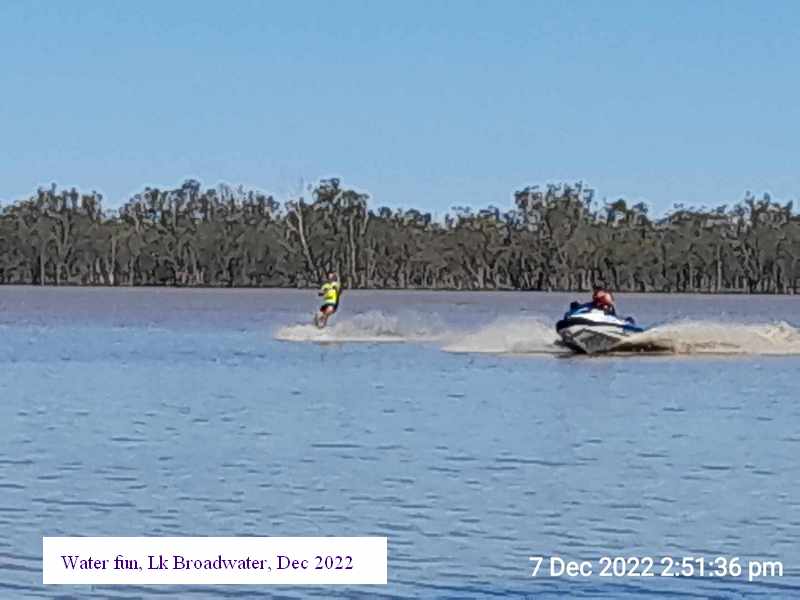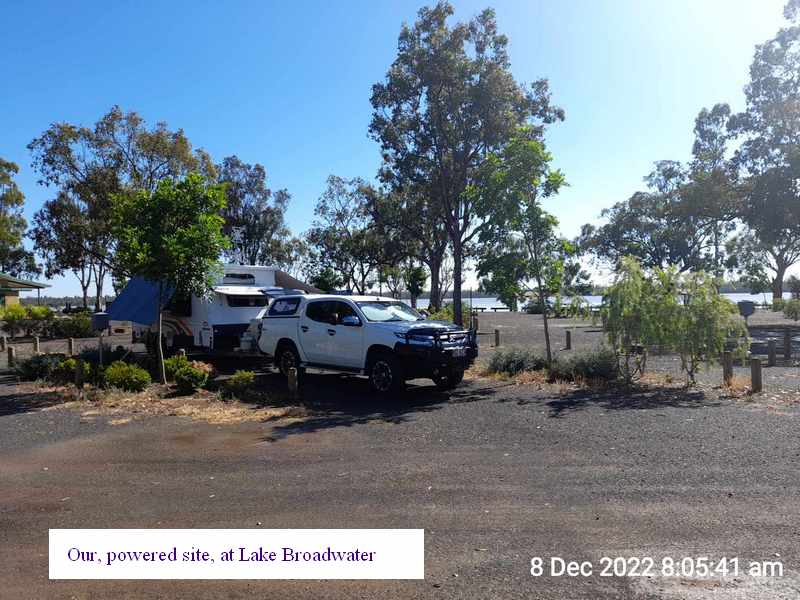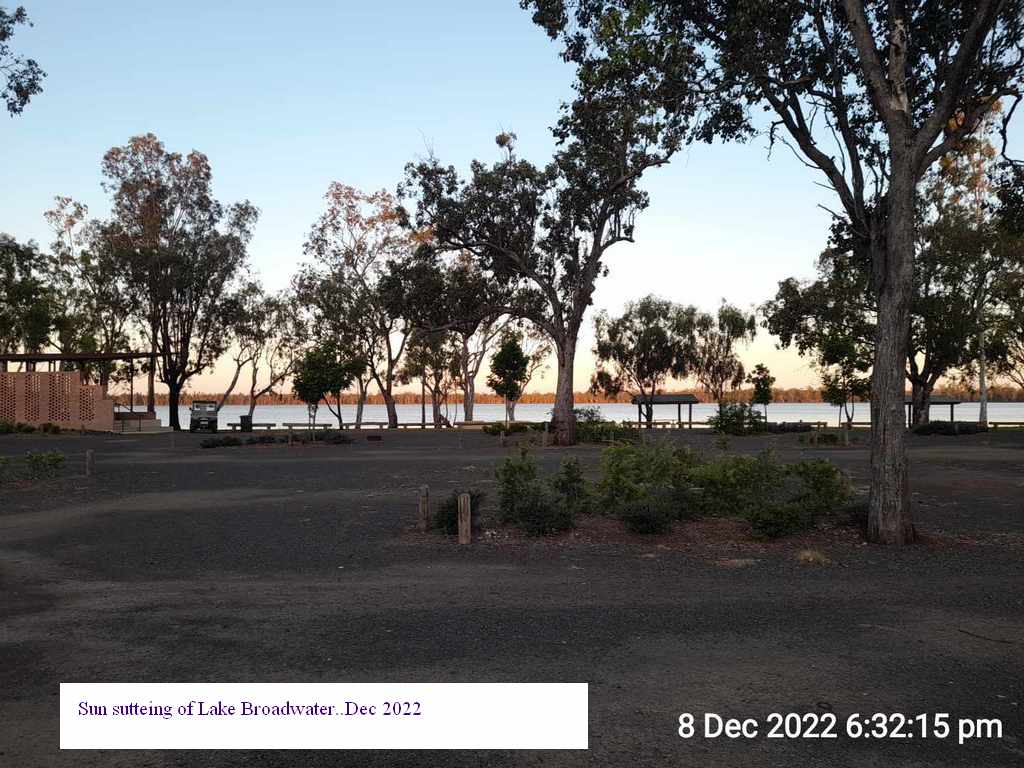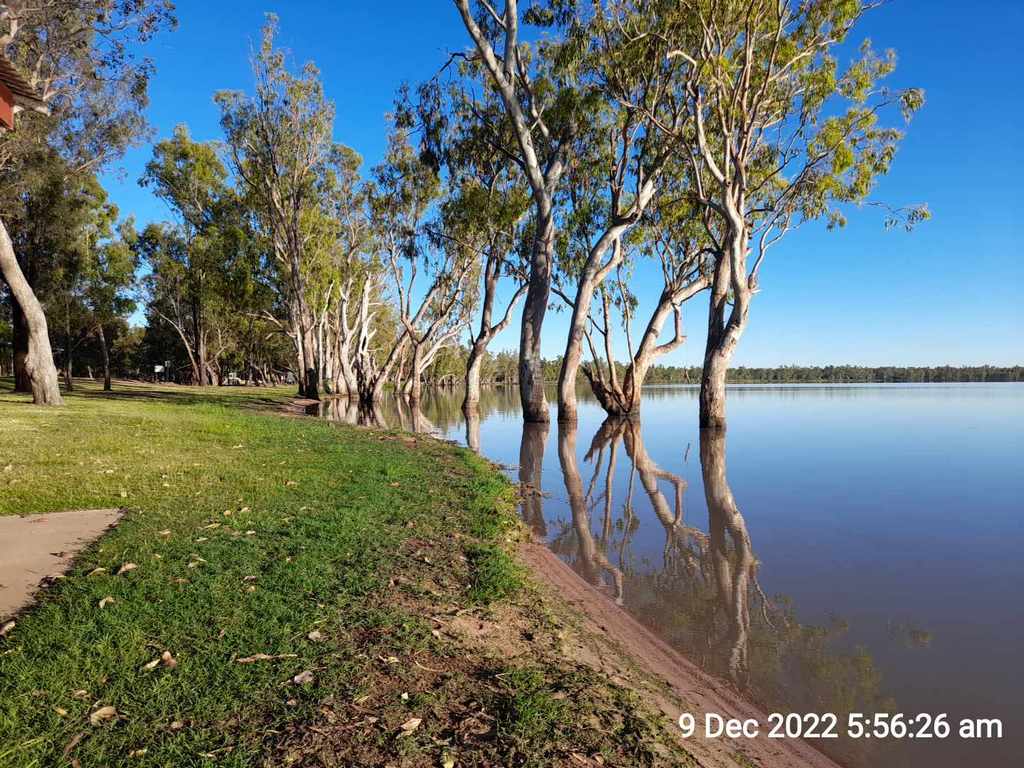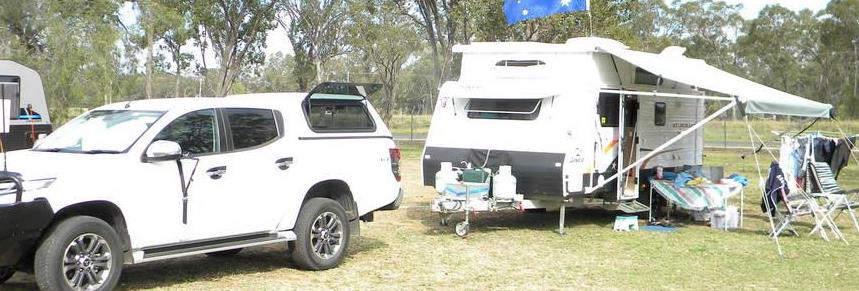
Paul and Pam's Website - Queensland Australia
Chinchilla
There was no hurry for us to get away, with just 200 or so km's to go. With poor weather reports we did not think we would be going anywhere but this changed later in the week and it looked quite good, we decided to go....because of this we had left most of our preparations until the day before we left!
Not to worry we were now experts at packing and we were able to get away around 9 am.
Our first stop was at the red Rooster just over the Great Dividing Range, breakfast here.
The run out to Chinchilla highlighted just how much the recent heavy rains had impacted on the Warrego Highway, it was very challenging to stare at the road ahead and miss the potholes...I managed to miss most of them anyway...it was not a pleasant trip however. We arrived at the Chinchilla showgrounds to find the campground almost deserted, we had no trouble securing the site we had had before and was hoping to get again.
Chinchilla is a favourite place for us...the showgrounds are flat, pretty much flood proof and close to town and a lot of the local attractions.
We found little had changed since or last visit, we simply wanted to get away, it had been sometime since we did.
Most of our time was spent just laying around the showground site, book reading was carried out a lot...we also went to the RSL from lunch as we did last time...major reno's have happened there and it looks great...good food, reasonable prices too.
Not to worry we were now experts at packing and we were able to get away around 9 am.
Our first stop was at the red Rooster just over the Great Dividing Range, breakfast here.
The run out to Chinchilla highlighted just how much the recent heavy rains had impacted on the Warrego Highway, it was very challenging to stare at the road ahead and miss the potholes...I managed to miss most of them anyway...it was not a pleasant trip however. We arrived at the Chinchilla showgrounds to find the campground almost deserted, we had no trouble securing the site we had had before and was hoping to get again.
Chinchilla is a favourite place for us...the showgrounds are flat, pretty much flood proof and close to town and a lot of the local attractions.
We found little had changed since or last visit, we simply wanted to get away, it had been sometime since we did.
Most of our time was spent just laying around the showground site, book reading was carried out a lot...we also went to the RSL from lunch as we did last time...major reno's have happened there and it looks great...good food, reasonable prices too.
Chinchilla, apart from being the 'watermelon capital of Australia' is also the site of one of the countries most successful scientist projects..the destruction of the cursed prickly pear.
This insidious cactus plant was brought to Australia on the First Fleet in 1788, in a very short time it spread across the country damaging farmlands, after a lot of searching an insect was discovered that eats the cactus, it was brought to Queensland and away it went.
The first release of Cactoblastis cactorum moths into the Australian environment in 1926 is regarded as one of the world’s most spectacular examples of biological weed control.
Before their release, prickly pear had overtaken 60 million acres (24.3 million hectares) of land in New South Wales and Queensland, making it unusable.
By 1933 it was estimated that 80 per cent of the infested land in Queensland, and 50–60 per cent in New South Wales, had been cleared.
This insidious cactus plant was brought to Australia on the First Fleet in 1788, in a very short time it spread across the country damaging farmlands, after a lot of searching an insect was discovered that eats the cactus, it was brought to Queensland and away it went.
The first release of Cactoblastis cactorum moths into the Australian environment in 1926 is regarded as one of the world’s most spectacular examples of biological weed control.
Before their release, prickly pear had overtaken 60 million acres (24.3 million hectares) of land in New South Wales and Queensland, making it unusable.
By 1933 it was estimated that 80 per cent of the infested land in Queensland, and 50–60 per cent in New South Wales, had been cleared.
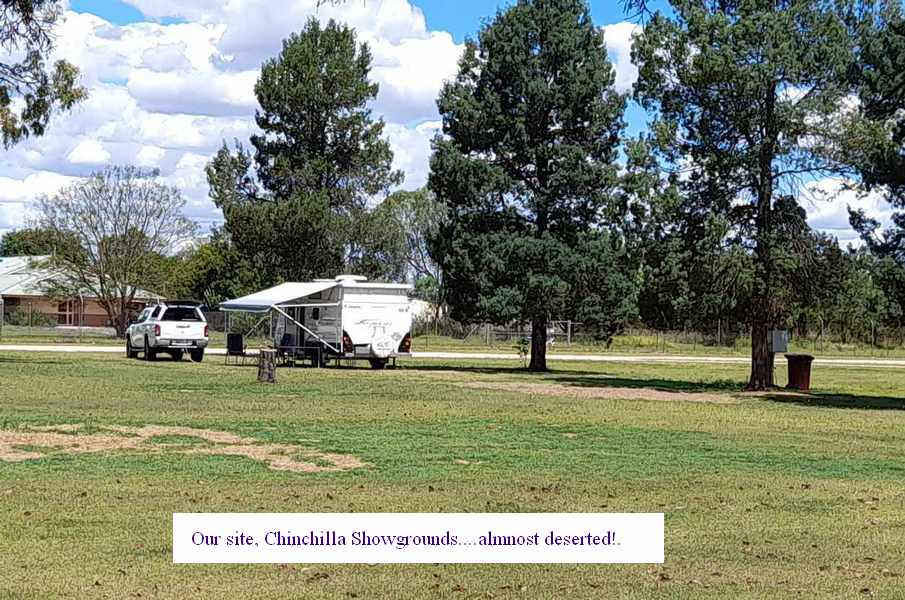
Lake Broadwater
Another favourite campsite for us....just around 100km from Chinchilla we thought it a nice place to end this very short trip west.
We were lucky enough to get a powered site there...with 39 degrees forecast the air-con was going to get some use.
Like Chinchilla little has changed sine our last visit on the 'Roo's on the Beach' trip earlier this year.
